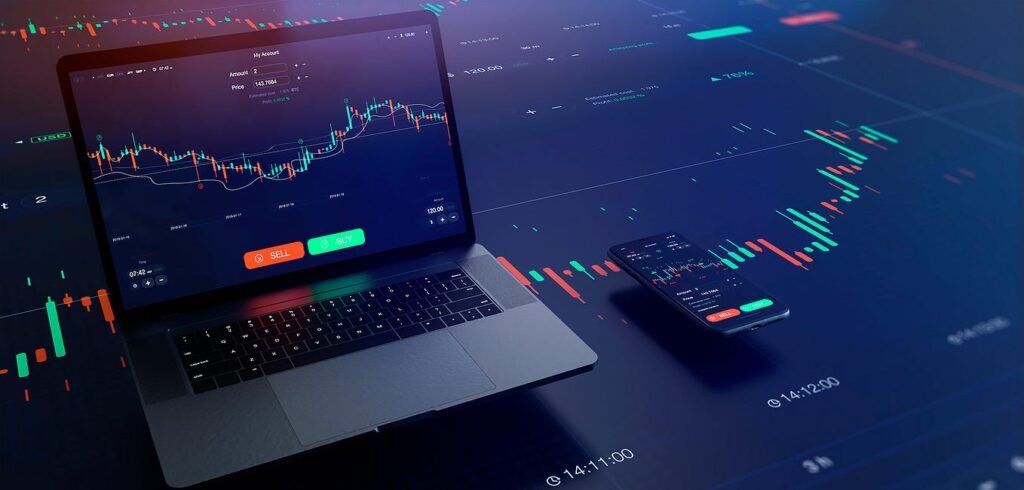Choosing the right cryptocurrency trading platform can make the difference between profitable trades and costly mistakes. With over 500 crypto exchanges operating globally, conducting a thorough cryptocurrency trading platform comparison has become essential for both beginners and experienced traders. The digital asset market has evolved dramatically, with platforms offering everything from spot trading to advanced derivatives, staking rewards, and institutional-grade security features. This comprehensive guide will help you navigate the complex landscape of crypto exchanges, examining critical factors like trading fees, security protocols, available cryptocurrencies, and user experience to ensure you select the platform that best aligns with your trading goals and risk tolerance.
What Makes a Great Cryptocurrency Trading Platform?
When evaluating crypto exchanges, several fundamental criteria separate exceptional platforms from mediocre ones. Security stands as the paramount concern, with top-tier platforms implementing multi-signature wallets, cold storage solutions, and regular security audits. Trading fees significantly impact your profitability, especially for active traders who execute multiple transactions daily.
User interface design directly affects your trading efficiency. Intuitive platforms reduce learning curves and minimize costly trading errors. Liquidity remains crucial for executing large orders without significant price slippage, while customer support quality can be the difference between resolving issues quickly or losing money during critical market movements. Regulatory compliance ensures platform longevity and user protection. Exchanges operating under proper licensing frameworks provide additional security layers and legal recourse for users.
Top Cryptocurrency Trading Platforms Analyzed

Binance: The Global Volume Leader
Binance consistently ranks as the world’s largest cryptocurrency exchange by trading volume, offering over 350 digital assets and numerous trading pairs. The platform excels in providing competitive trading fees, starting at 0.1% for spot trading, with additional discounts available through their native BNB token.
Advanced traders appreciate Binance’s comprehensive suite of tools, including futures trading, options contracts, and margin trading capabilities. The platform supports both web and mobile applications, catering to traders across different experience levels. However, regulatory challenges in certain jurisdictions have limited Binance’s availability in some regions, making it essential to verify accessibility in your location before committing to the platform.
Coinbase: The Beginner-Friendly Option
Coinbase has established itself as the premier entry point for cryptocurrency newcomers in the United States. The platform’s user-friendly interface simplifies the crypto buying process, while robust educational resources help users understand blockchain technology fundamentals.
Security remains Coinbase’s strongest selling point, with the majority of user funds stored in offline cold storage and comprehensive insurance coverage for digital assets. The platform maintains strict compliance with US financial regulations, providing users with additional peace of mind.
Trading fees tend to be higher than competitors, with spread-based pricing for basic users and maker-taker fees for advanced traders ranging from 0.5% to 0.6%.
Kraken: The Security-First Exchange
Kraken has built its reputation on providing institutional-grade security features while maintaining accessibility for retail traders. The platform offers extensive cryptocurrency selection, including numerous altcoins and DeFi tokens not available on other major exchanges.
Advanced trading features include margin trading with up to 5x leverage, futures contracts, and comprehensive order types. Kraken’s fee structure remains competitive, with trading fees ranging from 0.16% to 0.26% depending on your 30-day trading volume.
The platform’s commitment to transparency includes regular proof-of-reserves audits and detailed security reports, making it a preferred choice for security-conscious traders.
Cryptocurrency Trading Platform Comparison: Key Features
Fee Structures and Cost Analysis
Trading fees significantly impact your overall profitability, especially for active traders. Most platforms employ a maker-taker fee model, where market makers (limit orders) pay lower fees than market takers (market orders).
Withdrawal fees vary dramatically between platforms and cryptocurrencies. Some exchanges charge fixed fees regardless of withdrawal amount, while others implement percentage-based fees. Consider both trading and withdrawal fees when calculating total platform costs.
Hidden fees often include spread markups on cryptocurrency purchases, inactivity fees, and deposit charges for certain payment methods. Always review the complete fee schedule before committing to any platform.
Security Features and Protocols
Two-factor authentication (2FA) represents the minimum security standard for reputable exchanges. Look for platforms offering multiple 2FA options, including SMS, authenticator apps, and hardware security keys.
Cold storage percentages indicate how much of user funds remain offline and protected from hacking attempts. Leading exchanges maintain 90-95% of user funds in cold storage, with only operational amounts kept in hot wallets.
Insurance policies provide additional protection layers. Some platforms offer comprehensive coverage for digital assets, while others provide limited protection only for fiat currency deposits.
Available Cryptocurrencies and Trading Pairs
Cryptocurrency selection varies significantly between platforms. Major exchanges typically offer popular cryptocurrencies like Bitcoin, Ethereum, and established altcoins, while specialized platforms may focus on DeFi tokens or emerging blockchain projects.
Trading pair availability affects your ability to execute specific trading strategies. Platforms with extensive USD, EUR, and BTC trading pairs provide more flexibility for portfolio management and arbitrage opportunities.
New token listings can provide early investment opportunities, but also carry higher risks. Evaluate platforms based on their token vetting processes and listing criteria.
Advanced Trading Features Comparison
Professional traders require sophisticated tools and features beyond basic buy-sell functionality. Margin trading capabilities allow traders to amplify positions using borrowed funds, though this increases both potential profits and losses.
Futures and derivatives trading enable advanced risk management strategies and speculation on price movements without owning underlying assets. Not all platforms offer these features, so evaluate your trading strategy requirements carefully.
API access facilitates algorithmic trading and portfolio management through third-party applications. Platforms with robust APIs attract institutional clients and advanced retail traders.
Mobile Trading Experience
Mobile applications have become essential for modern cryptocurrency trading, allowing users to monitor markets and execute trades from anywhere. Top platforms offer full-featured mobile apps with real-time price alerts, advanced charting tools, and complete account management capabilities.
Push notifications keep traders informed about significant price movements, order executions, and security alerts. Customizable alert systems help traders stay on top of fast-moving cryptocurrency markets.
Offline functionality varies between applications. Some platforms cache essential data for limited offline access, while others require constant internet connectivity for all features.
Regulatory Compliance and Geographic Availability

Regulatory requirements vary significantly between jurisdictions, affecting platform availability and feature sets. US users face different regulations than European or Asian traders, with some platforms offering reduced functionality or complete restrictions in certain regions.
KYC (Know Your Customer) and AML (Anti-Money Laundering) compliance requirements affect account verification processes and withdrawal limits. Established platforms maintain strict compliance standards, often requiring extensive documentation for account verification.
License verification ensures platforms operate under proper regulatory oversight. Research each platform’s regulatory status in your jurisdiction before depositing funds.
Customer Support and User Experience
Response times for customer support tickets can be critical during market volatility or account issues. Leading platforms offer multiple support channels, including live chat, email tickets, and phone support for premium users.
Educational resources help new users understand cryptocurrency trading concepts and platform-specific features. Comprehensive knowledge bases, video tutorials, and market analysis content add significant value for learning traders.
Community features, including forums and social trading elements, foster user engagement and knowledge sharing. Some platforms incorporate social trading features allowing users to follow and copy successful traders.
Conclusion
Selecting the right cryptocurrency trading platform requires careful consideration of your individual trading needs, experience level, and risk tolerance. This cryptocurrency trading platform comparison reveals that no single exchange excels in every category, making it essential to prioritize features that align with your specific requirements.
Whether you’re a beginner seeking user-friendly interfaces and educational resources or an advanced trader requiring sophisticated tools and low fees, the right platform can significantly impact your trading success. Take time to research each option thoroughly, start with small amounts to test platform functionality, and always prioritize security over convenience.
Ready to start your crypto trading journey? Begin your cryptocurrency trading platform comparison today by signing up for demo accounts on your top choices and experiencing their features firsthand before committing your funds.




















